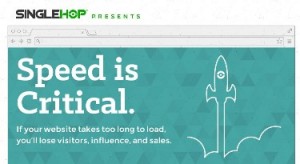As Ad Industry Moves To Reduce Carbon Footprint, Prices Expected To Rise

California governor Gavin Newsom says he will sign legislation that would require large companies to disclose their carbon footprints, potentially putting the state ahead of federal regulators on managing corporate climate risks.
The State senate approved the bill that mandates the disclosure of greenhouse gas emissions. The bill must be decided by October 14.
Apple and Microsoft — multinational companies that support the bill — have been working for years to reduce their carbon footprint. The California Chamber of Commerce said the bill would increase costs and paperwork for businesses.
Lawyers have said the new California legislation could still be challenged in court, per Reuters. Newsom may allow California wild fires to continue to burn, but he’s determined to save California through making companies disclose their carbon footprints. It wouldn’t be such a bad thing if he focused on both.
Regardless of potential rising costs and challenges, some in the advertising industry are ahead of the curve. Adform, a global programmatic platform, recently released the results of its carbon reduction capabilities pilot program.
Adform’s DSP, enabled by its recent partnership with Scope3, drove a decrease in digital advertising emissions for Audi, Vodafone, and PcComponentes, while improving campaign performance toward brand-specific KPIs.
Carbon emissions as a result of digital ads have become a topic of focus and concern among advertisers, agencies, and publishers. Recent studies show display and streaming ads are responsible for 7.2 million metric tons of emissions annually, which is the equivalent to yearly electricity usage for 1.4 million U.S. households.
A 2023 survey conducted by Adform found that across global market decision makers, 70% considered sustainability an important topic in programmatic planning.
However, respondents to the same survey stated that reducing these emissions can be challenging. This is mostly due to a lack of green media solutions that offer quantifiable data and results while maintaining performance. Something Microsoft’s Bill Gates is trying to change with nuclear energy.
Adform’s carbon-reduction capabilities enable clients to implement change without compromising business-specific objectives. This is done through excluding up to 30% of the highest-emitting domains, without sacrificing reach or performance.
For example, Audi Czech Republic used this carbon reduction feature as part of its advertising campaign with Adform for its new edition of e-tron vehicles. Deployed by media agency PHD, campaigns achieved an 81% lower gCO2PM compared to the Scope3 market average, while driving a 65% increase in clickthrough rate (CTR).
Vodafone Germany partnered with Adform to reduce the carbon footprint of its display campaigns. The Cost per Acquisition (CPA) remained unaffected. The campaign achieved a 28% reduction in the average number of gCO2PM, a 35% increase in conversions per impression, and a 12% reduction in CPA.
The strategy seems sustainable. Vodacom in South Africa achieved a 58% reduction in the average gCO2PM, a 100% increase in conversion rate, and a 40% reduction in CPA. And, Spanish electronics retailer, PcComponentes, ran Adform’s carbon-reduction capabilities across a six-week campaign, showing a 21% reduction in overall carbon output against the market level.
Adform, in less than three months, delivered more than 45 campaigns with clients across industries such as Telecommunications, Banking, CPG, Travel, and Automotive to reduce carbon emissions. Building on the success of this proof of concept, Adform will also this week launch a new set of features for sustainable trading, including dashboards and benchmarks that provide greater control and transparency to clients.
The industry continues to better understand the physics of reducing carbon and how it will change the advertising industry. Last week Scope3 made its carbon emissions data open to all, exposing sources of emissions. Previously, only Scope3 customers could view and use the data, but now It should allow more people to identify the companies that do well or falter based on their carbon footprint. Sort of like what Neutronian did with privacy data scores.
Scope3 exposes carbon emissions for close to a million apps, websites, social platforms and tech providers across the media supply chain by looking at their ad selection, media distribution and creative delivery. It lets publishers breakdown the emissions of their ad practices and how it compares with other media outlets. The platform pulls data such as how a company’s servers work, information on sending bid requests and how much carbon it takes to serve a creative asset based on computing power and bit rate.
Change is not far off far off for the United States. The European Union has long been at the forefront of global efforts to fight climate change, the Financial Times explains. The EU has pioneered carbon pricing, with the EU Emissions Trading System (ETS) operating for close to two decades.
This Sunday, the EU will begin to implement another measure that will over time extend the same pricing principles to all carbon-intensive products sold on the EU market, wherever in the world they originate.
The new carbon border adjustment mechanism (CBAM) has two goals is to encourage industry worldwide to embrace greener technologies; and to prevent so-called carbon leakage, or the relocation of production outside our borders to countries with lower environmental standards, the FT writes.
(7)








